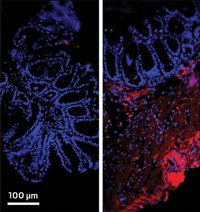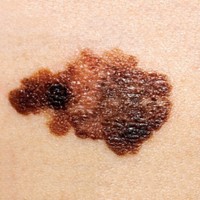Advertisement
Grab your lab coat. Let's get started
Welcome!
Welcome!
Create an account below to get 6 C&EN articles per month, receive newsletters and more - all free.
It seems this is your first time logging in online. Please enter the following information to continue.
As an ACS member you automatically get access to this site. All we need is few more details to create your reading experience.
Not you? Sign in with a different account.
Not you? Sign in with a different account.
ERROR 1
ERROR 1
ERROR 2
ERROR 2
ERROR 2
ERROR 2
ERROR 2
Password and Confirm password must match.
If you have an ACS member number, please enter it here so we can link this account to your membership. (optional)
ERROR 2
ACS values your privacy. By submitting your information, you are gaining access to C&EN and subscribing to our weekly newsletter. We use the information you provide to make your reading experience better, and we will never sell your data to third party members.
Nanomaterials
Inexpensive, GMP-certified material makes free radical fighters
Nanozymes made from activated charcoal break down damaging superoxides
by Gina Vitale
July 18, 2020
| A version of this story appeared in
Volume 98, Issue 28
When someone suffers a traumatic injury or stroke, the body produces oxygen radical anions known as superoxides as part of the inflammation response. When too many superoxides are produced, these radicals can do additional damage to the body, stealing hydrogen atoms from lipids and wreaking havoc on DNA. However, a team led by Thomas Kent at Texas A&M University, James Tour at Rice University, and Ah-Lim Tsai at the University of Texas Health Science Center at Houston have identified a way to use good manufacturing practice (GMP)–certified, cost-effective activated charcoal as a starting material to create oxidized charcoal nanoparticles dotted with carbonyl groups that react with superoxides and break them into hydrogen peroxide and water (ACS Appl. Nano Mater. 2020, DOI: 10.1021/acsanm.0c01285). Made by treating powdered charcoal with concentrated nitric acid, the oxidized nanoparticles, dubbed nanozymes, can break down excess superoxides at roughly the same rate as that of the body’s natural enzymes. “This is an example of a nanomaterial serving in a way that a small-molecule drug and an enzyme do not,” says James Tour, a nanomaterials researcher at Rice University. The researchers say these nanozymes could potentially be used to lessen the effects of a cytokine storm, an inflammation response to which superoxide production may contribute. The response is suspected of causing lung swelling and other secondary tissue and organ damage in people with COVID-19, the disease caused by the novel coronavirus SARS-CoV-2.
Correction
This story was updated on July 27, 2020, to correct the description of the rate at which the nanozymes break down superoxides. The reported nanozymes work at a rate roughly equal to the body's natural enzymes, not a significantly higher rate. Also, the story was updated to include the names and affiliations of all three corresponding authors of the paper.




Join the conversation
Contact the reporter
Submit a Letter to the Editor for publication
Engage with us on Twitter